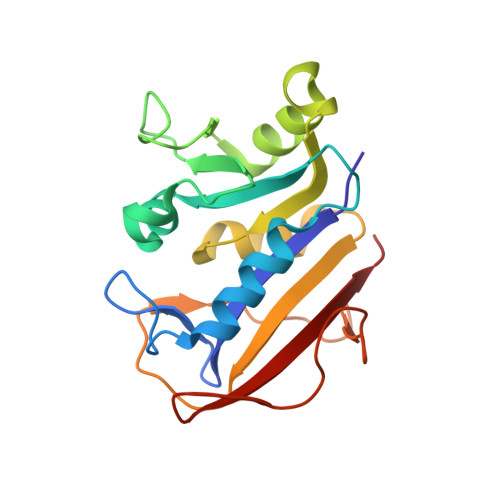Divergent evolution of protein conformational dynamics in dihydrofolate reductase.
Bhabha, G., Ekiert, D.C., Jennewein, M., Zmasek, C.M., Tuttle, L.M., Kroon, G., Dyson, H.J., Godzik, A., Wilson, I.A., Wright, P.E.(2013) Nat Struct Mol Biol 20: 1243-1249
- PubMed: 24077226
- DOI: https://doi.org/10.1038/nsmb.2676
- Primary Citation of Related Structures:
4M6J, 4M6K, 4M6L - PubMed Abstract:
Molecular evolution is driven by mutations, which may affect the fitness of an organism and are then subject to natural selection or genetic drift. Analysis of primary protein sequences and tertiary structures has yielded valuable insights into the evolution of protein function, but little is known about the evolution of functional mechanisms, protein dynamics and conformational plasticity essential for activity. We characterized the atomic-level motions across divergent members of the dihydrofolate reductase (DHFR) family. Despite structural similarity, Escherichia coli and human DHFRs use different dynamic mechanisms to perform the same function, and human DHFR cannot complement DHFR-deficient E. coli cells. Identification of the primary-sequence determinants of flexibility in DHFRs from several species allowed us to propose a likely scenario for the evolution of functionally important DHFR dynamics following a pattern of divergent evolution that is tuned by cellular environment.
- 1] Department of Integrative Structural and Computational Biology, Scripps Research Institute, La Jolla, California, USA. [2] Skaggs Institute for Chemical Biology, Scripps Research Institute, La Jolla, California, USA. [3].
Organizational Affiliation:



















